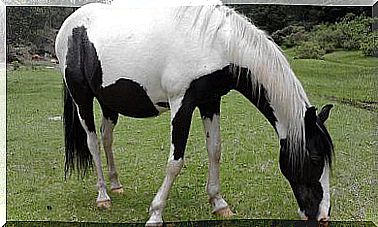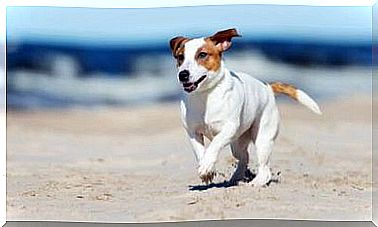5 Things To Know To Offer First Aid To The Dog
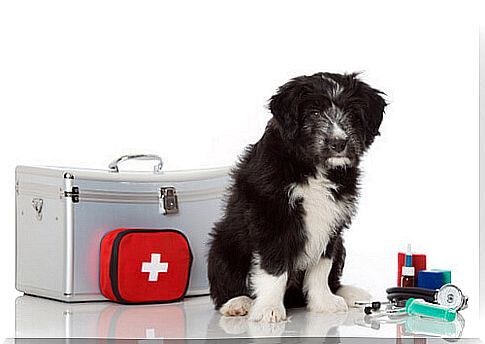
In an emergency situation, the important thing is to stay calm, always. In this article, you will find five things you need to know to give your dog first aid.
5 things to know to offer first aid to your dog
1. Keep calm
In an emergency, you must always remain calm. Inspiring peace of mind and safety is very important for a good performance. Animals sense our moods, and if the situation is stressful enough to make the animal nervous, getting angry will only make things worse.
2. Keep the dog away from the source of danger
The first thing is to keep the animal out of danger, whatever it is, and to put it in safety, guaranteeing its safety.
3. Observe the dog’s symptoms before doing any first aid
Observe your dog so you can describe his condition to a veterinarian. Depending on the affected system, the symptoms can be different:
- Respiratory system : dyspnoea (shortness of breath), bradypnea (slow breathing), tachypnea (rapid breathing), breathing noises, drowning …
- Circulatory system : mucus, bradycardia (weak pulse), very fast pulse (tachycardia), hypothermia, haemorrhage …
- Nervous system : unconsciousness, convulsions, paralysis, loss of proprioception, head tilt, absence of pupillary reflex …
- Kidney failure.
- Traffic accident injuries.
- Ache.
- Burns, allergic reactions.
- Electrocution.
- Heat stroke.
- Profuse vomiting and diarrhea.
- Immobility.
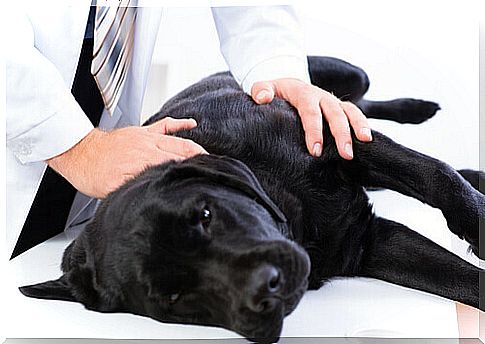
4. Seek the nearest veterinarian or emergency room
Many veterinarians offer 24-hour emergency services, which usually incur an additional cost for urgency and any unscheduled surgery. However, be aware that these charges are justified in most cases.
Veterinarians are health professionals, and the availability of emergencies comes at a great cost in terms of time, money and effort.
This call can save the life of our pet : we must speak calmly, report the urgency and go to the clinic as soon as possible.
5. How to give first aid to the dog while waiting for the vet
First of all, contact a veterinarian: he will provide you with the appropriate help and, if it takes time, he can guide you and tell you what to do until he arrives. In addition to describing the situation, you can perform one of the following steps to give your dog first aid:

Dog first aid in case of suffocation
Open the face of the animal and check that there are no objects in the mouth that prevent the passage of air into the trachea.
Wound with bleeding
If it’s a paw, wrap it in a bandage or clean cloth to stop the bleeding.
Persistent diarrhea and vomiting
Note the shape, texture, color or if there is blood. These data will help the veterinarian establish a diagnosis; even a sample can be of great help.
Earache
Check that there are no foreign bodies obstructing the ear. Infections are very common, cause otitis, and are contagious, so isolate your pet if you think you can infect another pet in the house until your vet confirms it.
Dog first aid in the event of a road accident
Avoid moving your dog, as he may have an injury or internal bleeding that may get worse if you move the body from where it is.
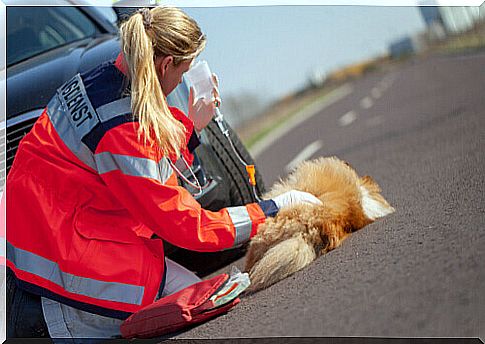
First aid: eye injuries
Don’t let the dog scratch or touch the affected eye. Try washing your eyes with warm, clean water to remove any possible dirt.
Foreign bodies
Foreign bodies such as spikes are common to find on the nose, muzzle and eyes and can cause significant damage. Check that it is not a rusty nail.
Convulsions
Make sure they can’t hit anything with furniture or objects during crises. Keep the dog in a room without stimuli that can further disturb his nervous system and take note of the situation when the attacks have started.
Poisoning
Bring a sample of the poison with you or write it down so the vet can act quickly and correctly. Knowing what caused the poisoning is key.
Heat stroke
It is best to prevent heatstroke, so the dog should always have access to a bowl with water to drink. Also, in the summer, when temperatures are too high, avoid giving him strenuous exercise or going out during the hottest hours. If heatstroke occurs, try cooling the body with wet bandages.
The most important thing is to contact a veterinarian, who will know how to handle the situation. But know that giving your dog first aid can save his life.



